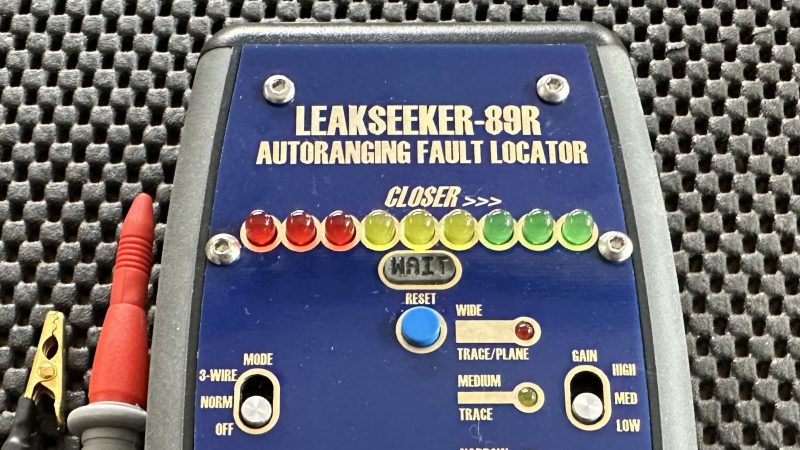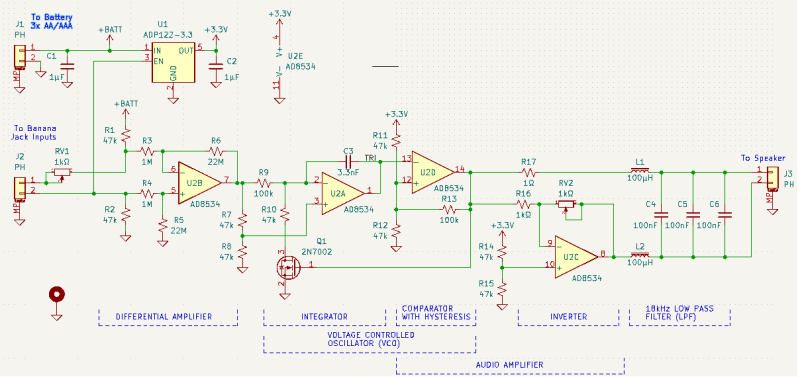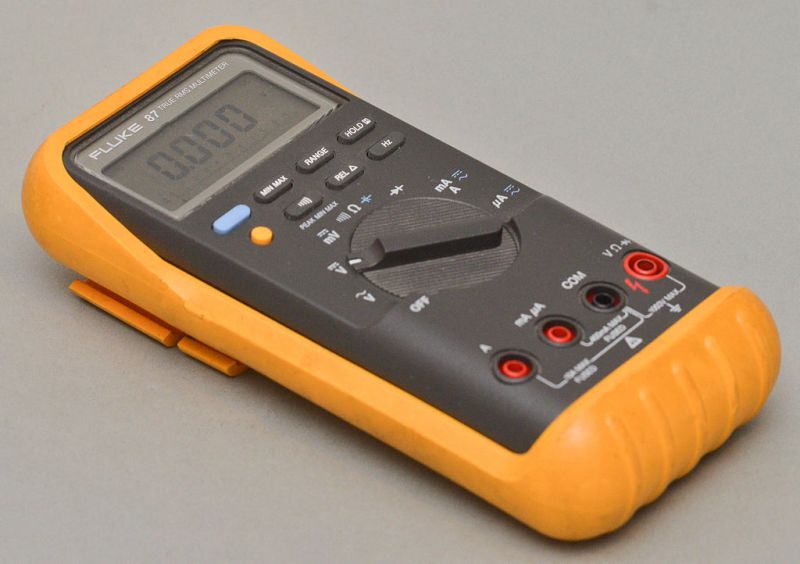Locate Faults With the Leakseeker-89R

Have you ever needed to hunt down a short circuit, but you’ve had no idea where it is or how it’s happening? As it turns out, there are tools to …read more Continue reading Locate Faults With the Leakseeker-89R
Collaborate Disseminate

Have you ever needed to hunt down a short circuit, but you’ve had no idea where it is or how it’s happening? As it turns out, there are tools to …read more Continue reading Locate Faults With the Leakseeker-89R

A continuity tester, as found on most multimeters today, is a great tool for finding broken connections and short circuits. But once you’ve found a short, it’s up to you …read more Continue reading Op Amp Contest: Clever Continuity Tester Tells you Where the Problem is

Multimeters are indispensable tools when working on electronics. It’s almost impossible to build any but the most basic of circuits without one to test and troubleshoot potential issues, and they …read more Continue reading Your Multimeter Might Be Lying To You

Almost every meter you find today will have a continuity tester. Connect the probes and it will beep if there is a short and won’t if there isn’t. But where …read more Continue reading Short Circuit Tracer for a Buck
Modern LED strips are magical things. The WS2812 has allowed the quick and easy creation of addressable RGB installations, revolutionizing the science of cool glowy things. However, this accessibility means that it’s easy to get in over your head and make some simple mistakes that could end catastrophically. [Thomas] is here to help, outlining a common mistake made when building with LED strips that is really rather dangerous.
The problem is the combination of hardware typically used to run these LED strings. They’re quite bright and draw significant amounts of power, each pixel drawing up to 60 mA at full-white. …read more
Continue reading The Engineering Case for Fusing Your LED Strips
There’s an inside joke among cyclists – the number of bikes you need is “n+1”, where “n” is your current number of bikes. The same probably also applies to the number of tools and equipment a hacker needs on their workbench. Enough is never enough. Although [David Johnson-Davies] has a couple of multimeters lying around, he still felt the urge to build a stand-alone continuity tester and has posted details for a super-simple ATtiny85 based Continuity Tester on his blog. For a device this simple, he set himself some tall design goals. Using the ATtiny85 and a few SMD discretes, …read more
![]() Continue reading Continuity Tester uses the ATtiny85’s Comparator
Continue reading Continuity Tester uses the ATtiny85’s Comparator
Have you ever wired up a piece of test equipment to a circuit or piece of equipment on your bench, only to have the dreaded magic smoke emerge when you apply power? [Steaky] did, and unfortunately for him the smoke was coming not from his circuit being tested but from a £2300 Clare H101 HiPot tester. His write-up details his search for the culprit, then looks at how the manufacturer might have protected the instrument.
[Steaky]’s employer uses the HiPot tester to check that adjacent circuits are adequately isolated from each other. A high voltage is put between the two …read more
![]() Continue reading Fail Of The Week: How I Killed The HiPot Tester
Continue reading Fail Of The Week: How I Killed The HiPot Tester
A powerful non-Apple laptop running macOS could be the ultimate personal computer. Continue reading Why Some Apple Fans Are Considering a Hackintosh
All Apple laptops are now un-upgradeable and are therefore disposable. Continue reading The New MacBook Pros Mark the End of Upgradeable Apple Computers